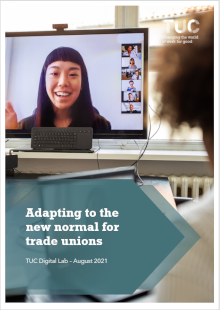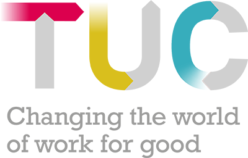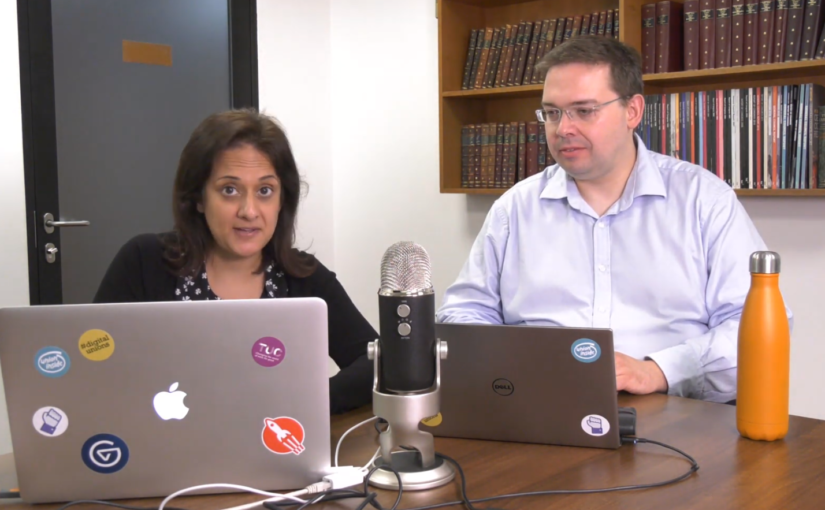I work in TUC Education digital learning, part of the team that runs rep training programs and designs training materials that are traditionally delivered by our network of tutors, attached to further education colleges.
TUC Education has long offered a variety of ways to complete reps’ training, face to face, online and a blended approach. In the year preceding the pandemic, almost 50% of core training for reps was already being delivered online.
That changed very quickly during the first lockdown. And now, eighteen months on, we’re finding that the legacy of that time is a new approach to both online and offline learning going forwards.
It’s worth saying that for us, there are two main and distinct categories of online learning.
There’s tutor-led online learning, which is basically the same as a face-to-face course, except it’s delivered via a screen, using a web-cam and video conferencing software. These kind of courses are quite long – maybe 60 hours as one day a week for 10 weeks, and are accredited by an external organisation
And then we’ve also got much more self-directed online learning. This includes our webinar series, as well as bite-sized pieces of e-learning content about individual topics. In addition to these shorter pieces of training, we also offer self-study versions of our core reps’ training courses.
How the pandemic changed online learning
Not only did we face a huge increase in the demand for all types of online learning, because nothing could happen face-to-face anymore, but we were managing and organising all of it remotely too, which was completely new for my team. We had been five days a week in the office prior to that.
We were lucky to get a massive head-start in that we were very familiar and comfortable with the basic technology already. But even so we found scaling up to the sheer volume of online stuff a bit of a challenge.
The demand for self-directed e-learning increased. In particular the demand for regular up-to-date information for workplace reps on all issues connected to coronavirus.
We produced several key pieces of e-learning really quickly to meet this demand for information. Topics about Covid included health and safety when working from home; domestic violence and Covid; returning to safe workplaces; and organising around safety concerns.
We got them out very speedily to provide reps with answers, and they were massively popular. They were accessed over a hundred thousand times because we chose to make them openly available on the TUC website, as well as via our regular learning portal.
For our tutor-delivered training program, which is fully accredited and normally delivered in a further education college, we also had to switch to online. And that was quite a challenge.
We have a network of very experienced tutors, but many of were pretty unfamiliar with the technological options. Some of them had never done a video call before, and all of a sudden we’re moving to this wholly online way of delivery.
So we had a lot of work in supporting people, showing them how to use zoom, teams or whatever, and how to use our online learning platform to deliver this training.
Our approach changed too. Prior to coronavirus, we did around one webinar a month. We did them from Congress House with pretty high production values. We had a lot of specialist recording equipment and picked rooms that worked well for sound and backdrop, where we could host the guests in person. We had different colleagues taking different technical and hosting roles.
They were quite time-consuming, I’ll be honest. Even though they only broadcast for an hour, we were finding it took a lot of time in prep, set up and follow up afterwards.
During lockdown, we had to switch to doing those from home instead. So out of necessity it became just one of us – normally me in my living room with my laptop, and bringing in guests from their own homes.
We realized quickly that the low-tech equipment method worked just as well, if not better. And it helped us keep up better with the huge demand for webinars, both from within the TUC and from affiliates.
In particular I want to mention the FDA. We did a lot of work with the union on getting their own webinar program up and running. The FDA team really took to this and it was hugely successful, reaching members who previously never engaged with union training. And for those of their members located all over the world, they were able to join trainings for the first time.
What’s the new normal for online learning post pandemic?
So, what do we think 2022 is going to look like? We’re glad that more of the tutor-facilitated training will be able to return to face-to-face delivery. However reps are also telling us that they don’t necessarily want to go back fully to the old models of one-day-a-week for 10 weeks. They now want the greater flexibility that the online methods gave them. That means we’ll have to think about programme delivery in a more flexible way, even where it’s delivered mostly offline.
And crucially, we found that our online learning in all its forms helped us reach a new kind of rep. It appealed more to reps who were younger. It reached more women. And it reached people who wouldn’t traditionally come to the union and get involved.
The longer courses worked fine if you could get facility time and expenses. But that is far from everyone. Self-directed learning instead was more convenient to new reps. It fit better with their hectic lives, especially for those with insecure work or family commitments. And it meant people who lived nowhere near a training venue could still find ways to train, and to be a rep.
It also let them be in charge of their learning objectives. Now if someone just wants to stay up to date with a refresher on certain topics, the online methods give them that flexibility.
But equally where we need to involve people more deeply and to learn together rather than alone, we can do that too. Reps have told us they value the social side of learning in a movement – meeting each other, sharing ideas and building connections.
So we’re going to try and do more blended learning too. This might mean people do their background reading and knowledge gaining parts of a course online and individually, but then they come together to network and practice key skills. Getting real experience in practicing interviewing members, or chairing a meeting, those sorts of things all work better face-to-face. Being flexible about course structure means we can save that option for where it’s most needed and most effective.
Due to the enforced digital response to the pandemic, many existing reps and new activists have had their expectations fundamentally raised in what they can expect from us. And now that genie is out of the bottle, we need to make sure we merge those very valid new expectations with a mix of traditional modes of delivery that embrace new technology and opportunity in all settings, rather than trying to go back for its own sake.
So 2022 for us looks like more of these trends towards increasing the opportunity for new reps to get involved, and for increasing flexibility in how people can choose to learn in a style and pace that suits them.
– Anna Kalsi is TUC Education’s eLearning Support Officer

Download the report
For more on the digital challenges for unions in adapting to the post-pandemic world, see the TUC Digital Lab report: Adapting to the new normal for trade unions

